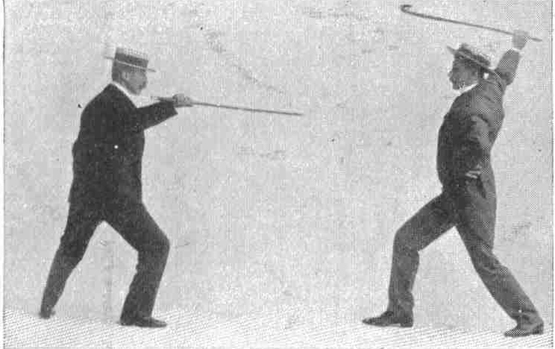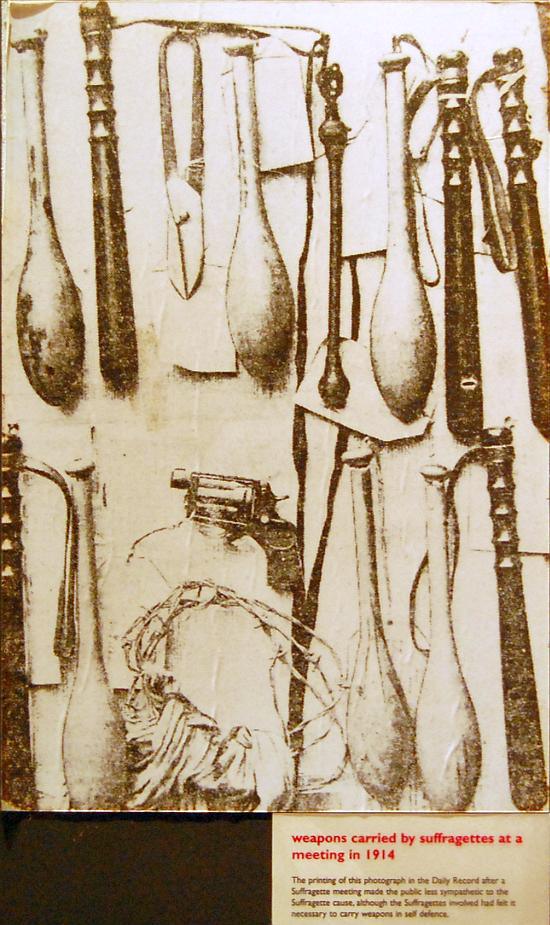- Originally published on the Bartitsu.org site on Wednesday, 4th November 2015

Although “Miss Sanderson’s” system of umbrella and parasol self-defence was quite famous in its day, the lady herself has remained elusive. For many years we have known little of her biography except that she was married to Bartitsu Club stickfighting and savate instructor Pierre Vigny; that she seems to have used the name “Miss Sanderson” for professional purposes (but she was sometimes referred to as Madame Vigny); and that she was described as being a fencing instructor and “champion lady fencer”.
Circa 1908, her unique self-defence system was featured in several newspaper and magazine articles, receiving widespread attention. Journalists were also effusive in their praise of her skill-at-arms:
Then Miss Sanderson came to the attack, and the demonstration showed her to be as capable with the stick as the sword. She passed it from hand to hand so quickly that the eye could scarcely follow the movements, and all the while her blows fell thick and fast. Down slashes, upper cuts, side swings, jabs and thrusts followed in quick succession, and the thought arose, how would a ruffian come off if he attacked this accomplished lady, supposing she had either walking-stick, umbrella, or parasol at the time? In tests, she has faced more than one Hooligan, who was paid to attack her, and each time he has earned his money well.
The contest between the Professor and Madame (Vigny, i.e. Miss Sanderson), which mingled the English art of Fisticuffs with the French Savate, was also intensely interesting, as proving the quickness, endurance and hitting power which can be developed as readily by members of the fair sex, as by those of the male persuasion, provided only that they be suitably trained.
– J. St. A. Jewell, “The Gymnasiums of London: Part X. — Pierre Vigny’s” Health and Strength, May 1904, pages 173-177.

Pierre and Marguerite Vigny, circa 1910.
The historical record has, up until very recently, been curiously silent as to Miss Sanderson’s given name, with no published source offering even so much as a given initial.
Now, however, thanks to Rachel Klingberg’s genealogical detective work, we finally know that Miss Sanderson/Madame Vigny’s first name was Marguerite. A 1901 British census lists her as being aged 27 and living with Pierre Vigny (then aged 35) and their 2-year-old daughter Yvonne, plus an 18-year-old servant, Antoinette Duchene, at an address on Chesilton Road in Middlesex, about 19 miles from the Bartitsu Club where Pierre, and possibly Marguerite, would have been employed in 1901. Marguerite was listed as having been a French national who was born in Switzerland.
Click on the above image to see detail.
Although searches for the names “Marguerite Sanderson” and “Marguerite Vigny” do not offer much further information, we know that she taught umbrella and parasol self-defence at her husband’s school during the period circa 1910 and continued to teach self-defence, fencing and physical culture classes for many years after the family returned to Switzerland, settling in Geneva.

In early 2015 “Miss Sanderson” was commemorated as a character in the Suffrajitsu graphic novel trilogy, in which she wields her “Sanderson special” umbrella in defence of the fugitive leaders of the radical suffragette movement during 1914.

























